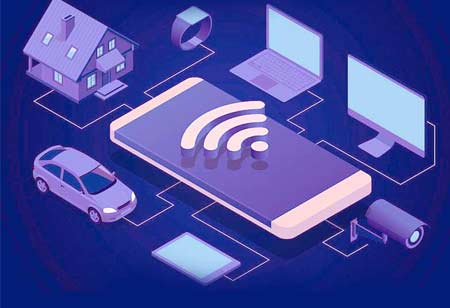THANK YOU FOR SUBSCRIBING
Cloud Computing Trends to Look Out for in 2023
The continuous cloud computing adoption has been a key driver of most transformative tech trends, including artificial intelligence (AI), the Internet of Things (IoT)

By
Apac CIOOutlook | Wednesday, November 16, 2022
Stay ahead of the industry with exclusive feature stories on the top companies, expert insights and the latest news delivered straight to your inbox. Subscribe today.
Increasing cloud computing adoption has resulted in transformative tech trends and is becoming an enabler of more technologies to provide efficiencies in operations and processes.
FREMONT, CA:The continuous cloud computing adoption has been a key driver of most transformative tech trends, including artificial intelligence (AI), the Internet of Things (IoT), and remote and hybrid working. It will further become an enabler of even more technologies, including virtual and augmented reality (VR/AR), the metaverse, cloud gaming, and quantum computing. In the coming years, more companies will leverage cloud services to access new and innovative technologies and drive efficiencies in their own operations and processes.
AI and ML-powered Cloud:Artificial intelligence (AI) and machine learning (ML) are delivered as cloud services, as few businesses have the resources to build their own AI infrastructure. Collecting data and training algorithms need huge amounts of computing power and cost-effective storage space to rent as-a-service.
Cloud service providers increasingly depend on AI for numerous tasks. This includes managing the vast, distributed networks required to provide storage resources to their customers, regulating the power and cooling systems in data centres, and powering cyber security solutions to keep their data safe. In the coming years, this field will be continued innovation as hyper-scale cloud service providers continue applying their AI technology to create more efficient and cost-effective cloud services for their customers.
Low-code and No-code Cloud Services:Tools and platforms allowing anyone to create applications and use data to solve problems without getting their hands dirty with writing computer code are becoming popular. This category of low- and no-code solutions includes tools for creating websites, web applications, and designing any digital solution companies may need. Low- and no-code solutions become available for creating AI-powered applications, significantly lowering the barriers to entry for companies desiring to leverage AI and ML.
Most of these services are offered via the cloud, where users can access them as-a-service without owning the powerful computing infrastructure required to run them. Such tools allow users to carry out tasks that would otherwise require coding experience, like designing websites, automating spreadsheet tasks, and building web applications.
Innovation and Consolidation in Cloud Gaming:The cloud has introduced many streaming service platforms, revolutionising how people consume movies, TV, and music. Furthermore, streaming video games is on its way. One of the challenges is the networks, as streaming video games require more bandwidth than music or videos. It is restricted to those who have good-quality high-speed internet access. The ongoing 5G and ultra-fast networking technology launches will solve these problems, and cloud gaming will make an impact in the coming years.
Companies will continue to use cloud services in 2023 and beyond to gain access to innovative technologies that will improve the efficiency of their operations and processes, with cloud adoption being pivotal to transformative tech trends.





